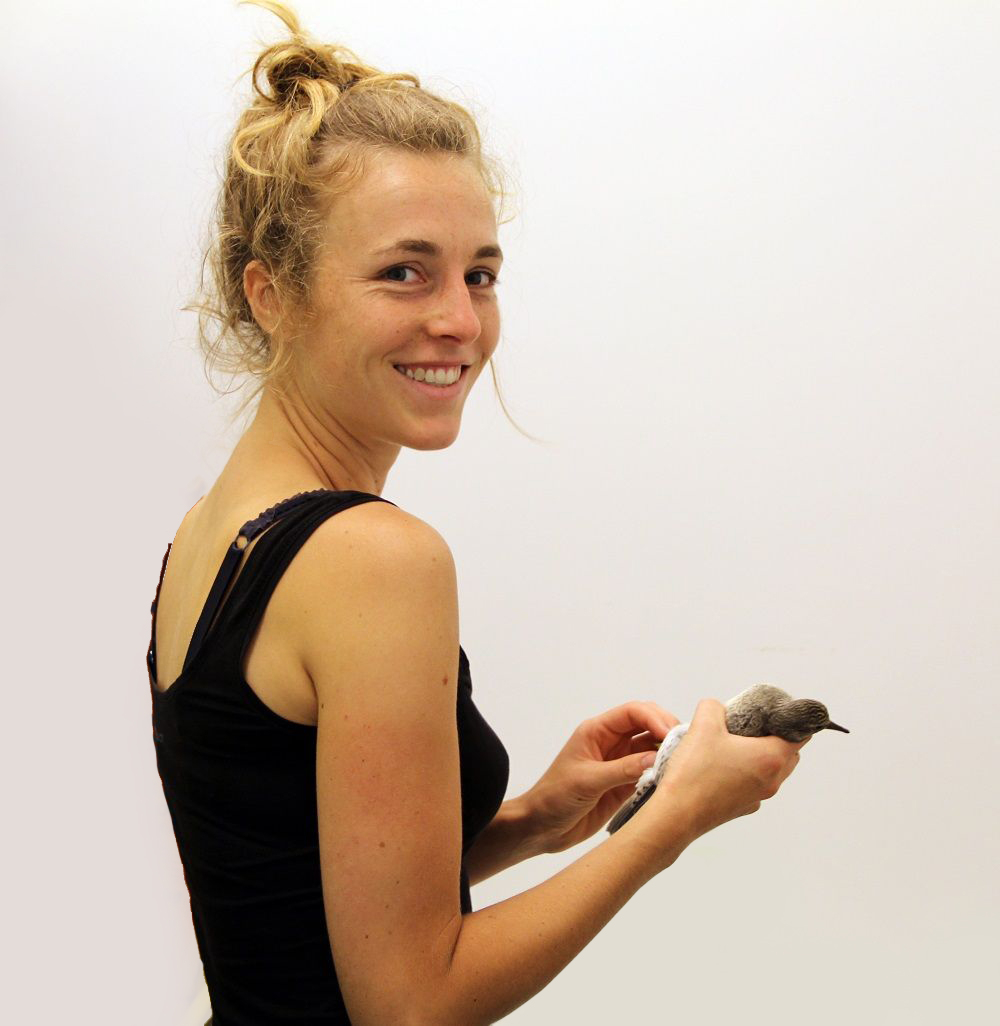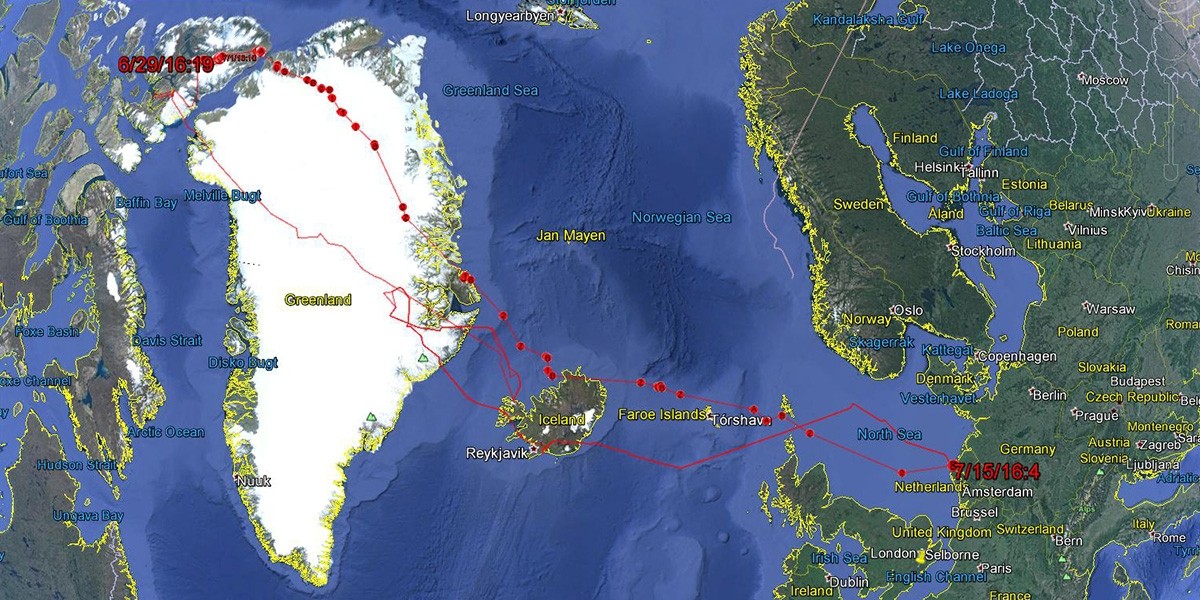Flying home. Examining the role of memorized locations as motivation for migration in red knots
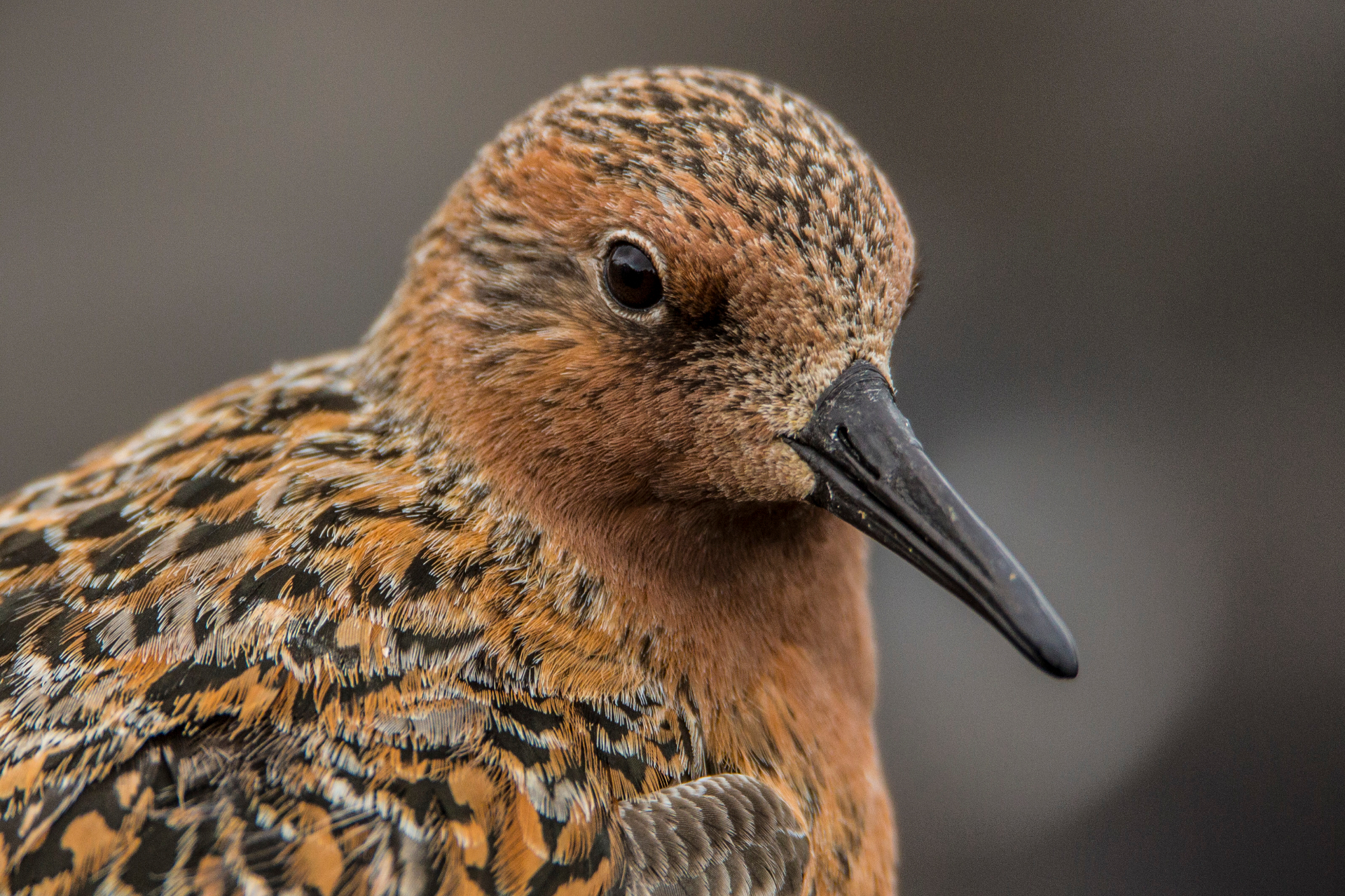
The role of memory
During the crossing of the Greenland Ice Sheet Paula did not follow a course along a constant heading, as was previously suggested. Instead, she continuously updated her course to be able to fly along the shortest path. Kok: ‘During her flight, she made most of the ambient wind fields, fell back on previous experiences and, as it seemed, also on memory through site recognition.’ Was it possible that red knot Paula had memorized pictures of the landscapes she had visited before?
Kok: ‘In 2017, Paula arrived on Ellesmere Island at the location from where she departed from the breeding grounds in 2016. She seemed to be targeting specific memorized locations.’ Eva Kok and fellow researchers set out to explore the possibility further: Could a seasonally changing preference for habitat motivate birds to embark on migration? And if so, could this guide them to seasonally appropriate places? Kok: ‘Migratory shorebirds show highly organized seasonal cycles. You can see the change in their body mass and composition, plumage, hormone levels and so on. In captive birds, this is accompanied by restless behaviour at times when free-living birds would start migrating.’
Longing for a place
The team, also including Theunis Piersma, professor of flyway ecology and Jerry Hogan, professor in psychology, wanted to get more insight into the question what motivates individual knots to migrate. This question hardly receives the attention it warrants. Hogan: ‘Usually, the focus lies on functionality and patterns. It’s mostly about fitness, i.e. survival and reproduction.’ It is quite some time since scientists expressed the idea that emotions, such as ‘longing for a place’, could motivate seasonal migration; 1757, when the Swedish naturalist Carl Linnaeus wrote about home-sickness in birds. Although cognitive experiments in shorebirds are scarce, Kok points to several lines of evidence for shorebirds possessing long-term memory. ‘Memory would also underpin motivation. The possibility of mental images of preferred habitats which change with the seasons brings up the notion of “homesickness”, a longing for a familiar but distant place.’
The team started by developing a method to verify whether red knots can memorize and discriminate contrasting pictures projected by LCD projectors. This was followed by two different experiments in which they tested for a seasonally changing preference for breeding or non-breeding habitat. Kok: ‘When carried out during the pre-breeding season, the red knots are expected to prefer pictures of mudflats, their non-breeding habitat. At the start of the breeding season, they should prefer pictures of the tundra breeding habitat.'
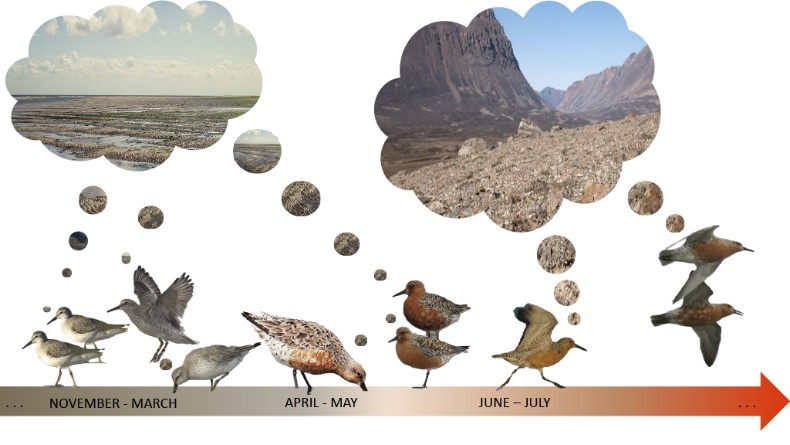
Mudflats versus tundra
In an experimental setting with red knots in temporary captivity, the researchers established that the birds are able to distinguish and memorize projected images. The second set of tests, however, didn’t show the predicted change in vision-based habitat preference. Despite these first results, Kok believes that it is too early to throw the hypothesis overboard. Kok: ‘We were not able to demonstrate a preference for either of the mudflats versus tundra pictures. Indeed, one possibility is that knots do not show seasonally changing preferences for habitat.’ However, Kok offers alternatives. She observed how knots learned, in successive trials, that the projected landscapes were not ‘real’. ‘During the first few trials, we observed birds flying into the part of the projection screen taken up by the sky, suggesting that they took this part of the image ‘seriously’. Having learned the artificial nature of the image, the birds may have lost interest.
The right tools
Kok still believes that there are enough leads to consider that seasonally changing preferences for a fitting natural environment play a role in the motivation for migration. Kok: ‘There is a chance that we have oversimplified our experiments,’ something not unusual in behavioural experiments held in a laboratory. The team suggests that experiments with greater numbers of individuals tested at once, in combination with additional cues such as smells and sounds. Kok’s search for the right experimental setting carries on, and she hopes the research so far will inspire others. Kok and co-authors Hogan and Piersma underline: ‘Touching upon the role of memory during migration, we hope to have started to scratch the surface on the role of cognitive mechanisms motivating seasonal migration.’
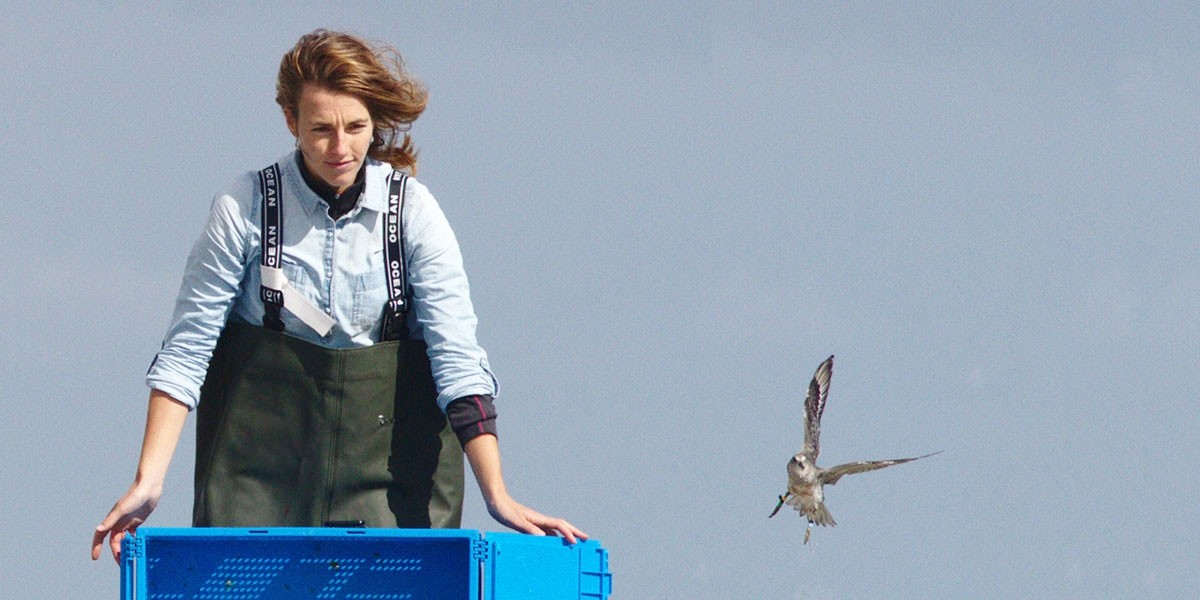
Articles
Eva M. A. Kok, Jerry A. Hogan, Theunis Piersma
Experimental tests of a seasonally changing visual preference for habitat in a long‐distance migratory shorebird
Ethology, International Journey of Behavioural Biology (2020), DOI: 10.1111/eth.13036
Eva M. A. Kok, T. Lee Tibbitts, David C. Douglas, Paul W. Howey, Anne Dekinga, Benjamin Gnep, Theunis Piersma
A red knot as a black swan: how a single bird shows navigational abilities during repeat crossings of the Greenland Icecap
Journal of Avian Biology (2020), DOI: 10.1111/jav.02464
- Experimental tests of a seasonally changing visual preference for habitat in a long‐distance migratory shorebird. Ethology, International Journey of Behavioural Biology (2020)
- A red knot as a black swan: how a single bird shows navigational abilities during repeat crossings of the Greenland Icecap. Journal of Avian Biology (2020)
